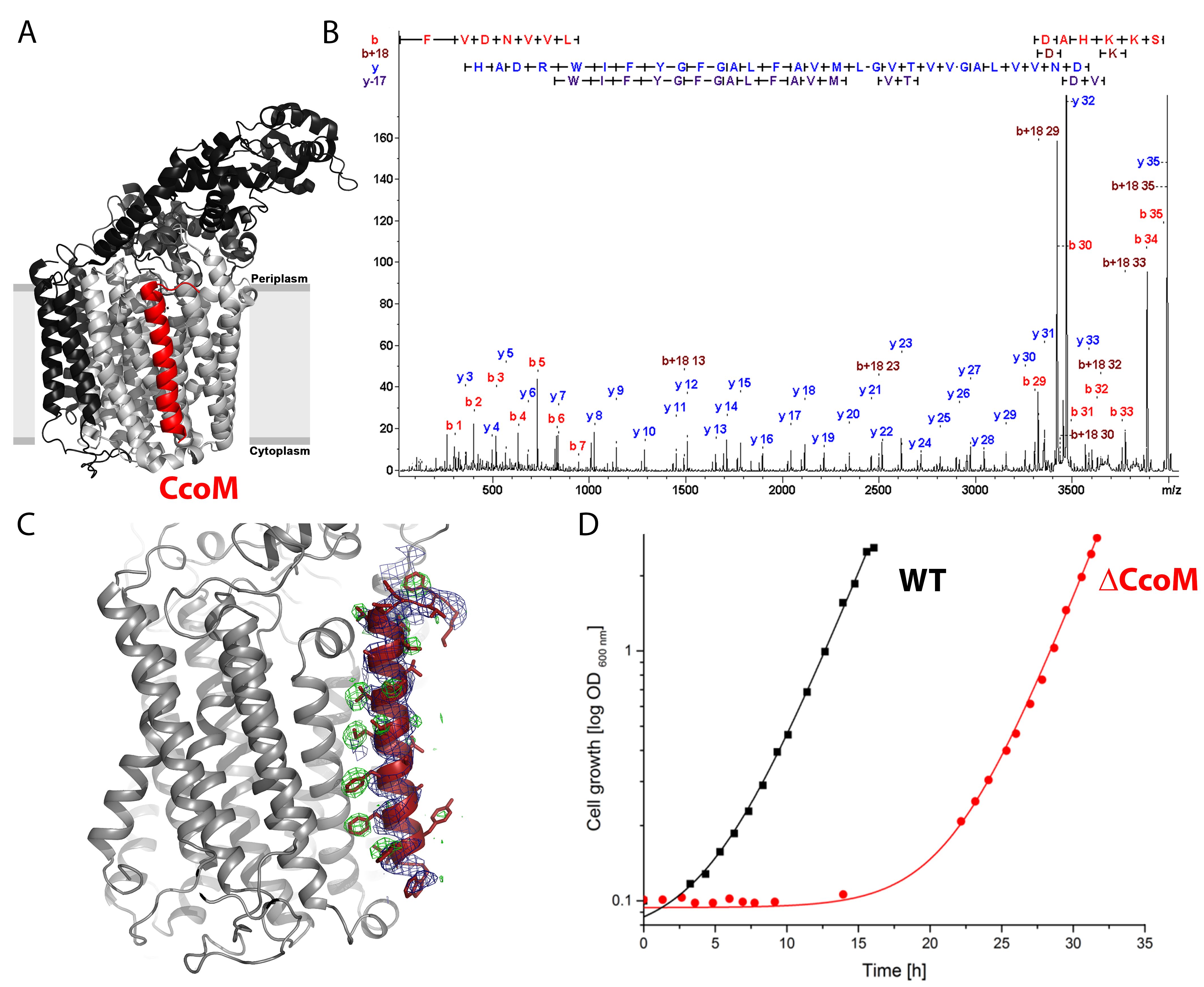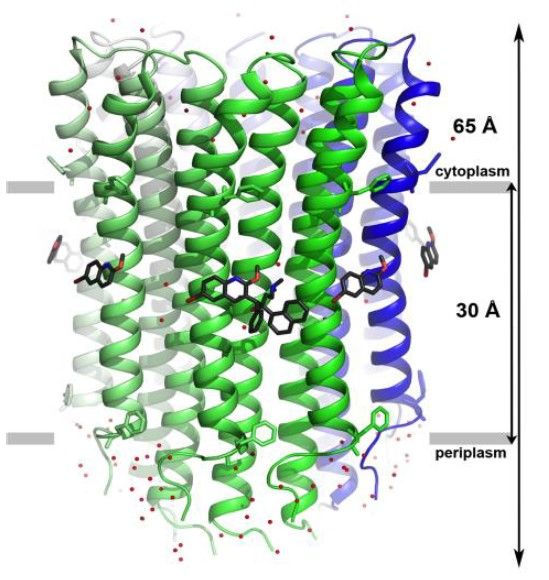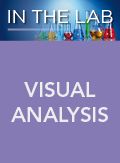Developing New Mass Spectrometry Solutions: From Individual Membrane Protein Complexes to In-Vivo Proteome Dynamics
Pharmaceutical Technology's In the Lab eNewsletter
High speed MALDI mass spectrometry instrumentation drives multidisciplinary membrane proteomics research.
Biological membranes serve multiple, essential functions-they provide water-impermeable barriers for cells and intracellular compartments, regulate the entry and exit of selected molecules, and create and serve as reaction environments for specific pathways. Membrane proteins are incorporated into the lipid bilayer and can, therefore, enable specific passage or transport of selected substances across the membrane. In addition, membrane proteins can make use of the hydrophobic environment within the bilayer to selectively catalyze reactions that could not be conducted in the presence of water. Cell communication is another vital role of membrane proteins-many act as sensors and receptors, to receive incoming signals at the outer surface of the membrane and transduce them across the bilayer.
Understanding the precise mechanism of membrane proteins is essential to address a wide range of questions that range from antibiotic resistance in prokaryotes to synaptic plasticity in neurons. A comprehensive understanding is only possible with detailed knowledge of the protein’s atomic structure-commonly obtained using x-ray crystallography or electron cryomicroscopy-and subsequently, function and mechanism can be deduced.
Mass spectrometry (MS) plays a complementary role and often provides essential information that leads to a better understanding of structural and functional data. Qualitative and quantitative proteomics approaches allow the characterization of membrane proteins down to the individual amino acid level and can identify modifications. Functional assays, based on hydrogen-deuterium exchange and native mass spectrometry (HDX–MS), for example, provide new insights into ligand binding, conformational dynamics, and oligomeric states. Lipidomics analyses yield information on the membrane environment and the effect of lipids on protein activity and vice versa. Particularly for x-ray crystallographers, matrix-assisted laser desorption/ionization (MALDI)–MS can be used to analyze individual membrane protein. This approach allows direct evaluation of the proteins present in the crystals prior to the time- and cost-intensive process of diffraction data acquisition and analysis.
Here, the authors report how advances in MS instrumentation directly resolved challenges in the structural and functional characterization of membrane proteins, for further understanding of prokaryotic and eukaryotic drug targets.
Membrane mass spectrometry and structural biology
At the Max Planck Institutes (MPI) for Biophysics, interdisciplinary approaches are used to study membrane proteins from prokaryotes, eukaryotes, and Archaea. MS-based assays play an essential role in a large number of projects and include bottom-up proteomics and analyses of post-translational modifications (PTMs), HDX–MS, different functional assays, single-crystal MS, and, recently, direct and complete sequencing using MALDI–MS/MS of polypeptides up to 10 kDa. In particular for structural studies using electron cryotomography, MS has provided essential, complementary information. The ground-breaking improvements in electron microscopy software and hardware over the past 5–10 years lead to a dramatic increase in the speed, resolution, and overall quality at which EM structures can be obtained as reflected in an exponential increase in EM-based structures published in the past years. Still, in particular, if the protein was produced non-recombinantly, the protein identity of the densities observed in the structural datasets needs to be confirmed. Conventional MS approaches often do not yield complete identifications, in particular if the subunits in question are small and hydrophobic polypeptides. Both customized bottom-up approaches using combinatorial digests and organic extractions and the new capabilities of the rapifleX MALDI–time of flight (TOF/TOF) MS have been used for the successful conclusion of multiple projects at the MPI for Biophysics.
Current example projects
Recent projects focused on prokaryotic respiratory chain complexes. These large membrane-embedded protein complexes have recently moved into the focus of antibiotic research. Until about 10 years ago, the main respiratory chain components, particularly terminal oxidases and adenosine triphosphate (ATP) synthases, were considered “non-drugable” due to the lack of detailed structural data and their high-sequence conservation between eukaryotes and prokaryotes. Then, however, most prominently in mycobacteria, the ATP synthase (1, 2) and potentially also the bdoxidase (3) were found to be highly-efficient drug targets. The elucidation of the respective x-ray structures, paired with different MS-based analyses, provided important new insights for these protein complexes. While the authors use the new MS instruments and techniques also on eukaryotic membrane proteins (4), this article focuses on the following prokaryotic membrane protein complexes that are either proposed or established drug targets:
- Cbb3 cytochrome c oxidase in Pseudomonas stutzeri
- Bdquinol oxidase in Geobacillus thermodenitrificans
- ATP synthase in Mycobacterium phlei.
Cbb3cytochrome c oxidase
Pseudomonasare soil bacteria and opportunistic pathogens to humans, primarily affecting immunocompromised patients. Pseudomonas aeruginosais one of the primary sources of nosocomial infections worldwide, with a high percentage of multidrug-resistant strains. Pseudomonas stutzeriis a non-pathogenic, close homologue of P. aeruginosa. The authors’ lab solved, in 2010, the crystal structure of the P. stutzericbb3cytochrome c oxidase, which is an essential protein complex involved in the bacterial respiratory chain (5). However, at the time, a single-transmembrane-helix subunit in the structure could not be identified using both bottom-up and top-down proteomics approaches, as both combinatorial digests as well as top-down electrospray ionization (ESI)–MS/MS analyzes did not yield sufficient sequence information. The unknown density was estimated to have approximately 35–40 residues, corresponding to approximately 4 kDa (red helix in Figure 1A). Using a customized MALDI–TOF/TOF MS, an MS/MS spectrum of m/z 3986 was acquired, which contained comprehensive sequence information allowing direct identification of the polypeptide (Figure 1B). This uncharacterized protein had been preliminarily annotated as an “ATP-dependent helicase,” but no functional data were available. The detected amino-acid sequence was in agreement with the x-ray data, as residues with large side chains matched large difference densities observed using a poly-Alanine model for the helix (Figure 1C), directly supporting the correct identification of the polypeptide. As already supported by secondary structure prediction tools, further functional studies showed that this new subunit plays an essential role in anaerobic respiration of Pseudomonas stutzeri (Figure 1D).
Figure 1. Identification and characterization of a novel μ–protein subunit in a prokaryotic terminal oxidase. A: Structure of the cbb3 cytochrome c oxidase from P. stutzeri (pdb: 3mk7). Subunits CcoN, CcoP, and CcoO are colored in dark grey, novel μ–protein subunit CcoM in red. Grey bars indicate membrane borders. B: Annotated matrix–assisted laser desorption ionization–mass spectrometry (MALDI–MS/MS) spectrum of purified CcoM (Mascot score: 294). C: CcoM amino–acid sequence fitted into 3mk7 electron densities of a preliminary poly–alanine model (2Fobs–Fcalc: 1.5 sigma, colored in blue; Fobs–Fcalc: 3.0 sigma, colored in green). D: Growth curves of P. stutzeri wild type (black curve) and the ΔCcoM variant (red curve) in anaerobic conditions.

Bd quinol oxidase
Further work included the structural and functional analysis of the bd quinol oxidase in Geobacillus thermodenitrificans, an aerobic thermophilic bacterium found in extreme environments. The bd quinol oxidase is a promising drug target; however, no structural data had been available to date. In the x-ray crystallographic data, just like in thecbb3cytochrome coxidase from P. stutzeri, the authors found an additional single transmembrane helix that had not been annotated to date. Using the rapifleX to directly sequence the polypeptide, MS/MS spectra that allowed unambiguous identification of this subunit (CydS, Figure 2) was successfully acquired-the annotation showed complete sequence coverage of the whole polypeptide chain with a mass accuracy of below 0.01 Da across the entire mass range (6). A fully annotated MS/MS spectrum of m/z 3705 is shown in Figure 2.
Figure 2: Mass spectrometry spectrum of CydS, a novel bd quinol oxidase subunit.

Mycobacteria and bedaquiline
In 2015, the lab of Thomas Meier solved the structure of the target protein of the novel antibiotic bedaquiline (1), used as treatment against multi-drug resistant tuberculosis (2). Compared to other antibiotics, bedaquiline dramatically reduces treatment time and shows high efficiency even against multidrug-resistant strains. The successful elucidation of the structure of target protein, the c-subunit of the ATP synthase, now allows a detailed understanding of the mode of action of bedaquiline in particular, as also the structure with bedaquiline bound to the c-subunit are available (Figure 3). The combination of polar/electrostatic and hydrophobic interactions, together with a unique molecular architecture, yield a highly effective compound that is active at extremely low concentrations.
Figure 3: X-ray structure of the mycobacterial c-ring (green) with bound bedaquiline (black).

In this project, to elucidate the structure, two MS-based assays played an essential role. First, routine analyzes were performed on protein solutions for crystallization and on trial crystals prior to diffraction data acquisition. Second, a MALDI-MS-based competition assay was set up that allowed direct detection of bedaquiline binding to the active site of the c-subunit (Figure 4). This assay thus allows screening of different antibiotics (e.g., bedaquiline and its derivatives), and assess their binding efficiency to the c-subunit. It can also be used to determine bedaquiline activity for different protein variants with point mutations that have been implied to lead to drug resistance. After direct binding has been shown in screening experiments with this assay, other biophysical techniques, such as titration calorimetry- or surface plasmon resonance-based approaches, can be used to accurately measure binding constants.
The detailed knowledge of the structure of the drug target now also allows the prediction of how mycobacterial resistance might evolve. In particular, residues above and below the binding site provide important interaction sites with bedaquiline, and their mutation might directly lead to a strong decrease in bedaquiline affinity and activity. Several mutations have been proposed in silico, but to date, no patients with bedaquiline-resistant mycobacterial strains have been reported.
In summary, MS provided essential, complementary data that allowed the successful elucidation of the structure of the mycobacterial c-subunit of the ATP synthase, the target of the novel antibiotic bedaquiline, and will play an important role in the future development of derivatives against bedaquiline-resistant strains.
Figure 4: Competition assay of bedaquiline and dicyclohexylcarbodiimide (DCCD) based on matrix–assisted laser desorption ionization–mass spectrometry, allowing direct monitoring of drug binding to the target protein's active site and evaluate activity. Increasing concentrations of bedaquiline (colored as indicated in the legend) show decreasing amounts of DCCD labeling, indicating direct competition of both compounds for the same binding site.

Membrane proteomics in the future
The recent developments in MS have enabled laboratories across the world to gain critical new insights in their basic and applied research, and constantly push the boundaries of what can be measured. The knowledge of the MS industry is constantly growing, and with that comes increasingly sophisticated capabilities.
References
- K. Andries et al., Science, 307 (5707) 223-7 (2005).
- L. Preiss et al., Science Advances, 1 (4) e1500106 (2015).
- M. Berney et al., mBio, 5 (4) e01275-14 (2014).
- T. Bausewein et al., Cell. 170 (4) 693-700.e7 (2017).
- M. Kohlstaedt et al., American Society for Microbiology, 7 (1) e01912-15 (2016).
- S. Safarian et al., Science, 352 (6285) 583-6 (2016).
About the authors:
Julian Langer is head of the Proteomics and Membrane Mass Spectrometry lab at the Max Planck Institutes for Biophysics and Brain Research. Julian Langer’s laboratory was established as a collaborative center between the Max Planck Institutes for Brain Research (BR) and Biophysics (BP) to develop custom mass spectrometry-based solutions for scientists at both institutes. The laboratory uses cutting-edge MALDI mass spectrometry technology to support their research in molecular membrane biology.
Email: julian.langer@biophys.mpg.de
Rohan Thakuris executive vice-president at Bruker Daltonics. He has more than 20 years of experience in mass spectrometry, including 14 years in MS development and has several patents in the field of ion optics. During his career, he held positions as director, Global Marketing for mass spectrometry solutions at Thermo and was director of Drug Discovery at a Pharma CRO for two years before joining Bruker. Thakur received his PhD in Chemistry from Kansas State University and did post-doctoral studies at Rutgers University, where his work involved using high-resolution MS analysis to prove the formation of ring-opened benzene metabolite-DNA and protein adducts.
Email: rohan.thakur@bruker.com

Drug Solutions Podcast: Applying Appropriate Analytics to Drug Development
March 26th 2024In this episode of the Drug Solutions Podcast, Jan Bekker, Vice President of Business Development, Commercial and Technical Operations at BioCina, discusses the latest analytical tools and their applications in the drug development market.
Full Tolerance Coverage Method for Assessing Uniformity of Dosage Units with Large Sample Sizes
March 10th 2025The ‘full tolerance coverage method’ is introduced as a coverage estimation approach for assessing the uniformity of dosage units from large sample sizes, ensuring that no dosage unit exceeds the specification range.
Inspiration Over Desperation: Accurant Biotech CEO Talks Leadership, Innovation, and Motivation
March 4th 2025Xiao-Yan Cai, PhD, shares insights into her leadership style, the importance of motivation in the workplace, and how she balances repetition with innovation, discussing how hobbies and resilience uniquely shape her professional approach, emphasizing the value of perseverance and preparation in both science and life.